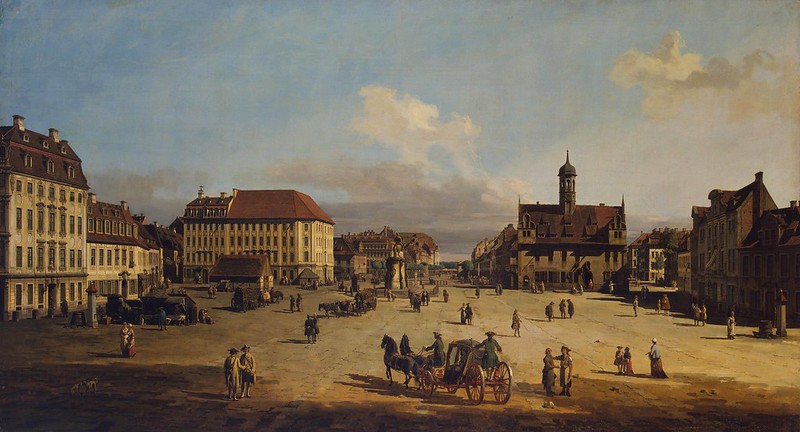Gottfried August Homilius (1714-1785) - Concerto per il Cembalo concertato (c.1761)
Performers: Sibelius + Instruments samples (edited by Pau NG)
Painting: Bernardo Bellotto (1721-1780) - Der Neustädter Markt in Dresden (1749-1750)
Further info: Gottfried August Homilius (1714-1785)
Performers: Sibelius + Instruments samples (edited by Pau NG)
Painting: Bernardo Bellotto (1721-1780) - Der Neustädter Markt in Dresden (1749-1750)
Further info: Gottfried August Homilius (1714-1785)
---
Gottfried August Homilius
(Rosenthal, 2 February 1714 - Dresden, 2 June 1785)
(Rosenthal, 2 February 1714 - Dresden, 2 June 1785)
German
composer, organist and Kantor. The son of a Lutheran pastor, he spent
his childhood from 1714 in Porschendorf (Pirna district). After his
father’s death in 1722 he attended the Annenschule in Dresden, where in
1734 he composed his earliest extant work, the cantata 'Gott der Herr
ist Sonn und Schild'. He sometimes stood in for the organist at the
Annenkirche, J.G. Stübner, who was probably his organ teacher. On 14 May
1735 he matriculated at Leipzig University in law; a class report from
the professor A. Kästner (16 September 1741) reads: ‘For three years the
candidatus juris has availed himself of my praelectionum iudicarum and
striven to master the fundamenta iuris. He has, however, always allowed
music to be his main task’. At this time he also took lessons from Bach
in composition and keyboard playing, as mentioned by J.A. Hiller
(Lebensbeschreibungen, 1784) and confirmed by Forkel (Ueber Johann
Sebastian Bachs Leben, Kunst und Kunstwerke, 1802); he was probably also
a pupil of, and assistant to, the organist at the Nikolaikirche, Johann
Schneider. In 1741 Homilius applied unsuccessfully for the organist’s
post of St Petri in Bautzen, submitting five chorale settings for organ
of which two had obbligato parts for horn. His first post as organist
was granted him in May 1742 by Dresden’s Frauenkirche, which possessed a
new Silbermann organ. An application on 5 November 1753 for the post of
organist at the Johanniskirche, Zittau, failed. On 10 May 1755,
however, he was appointed Kantor at the Kreuzkirche in Dresden and
teacher (Collega V) of the Kreuzschule (‘as he is skilled in Greek and
all else, but is pre-eminent in music’), and at the same time music
director of Dresden’s three principal churches – the Kreuzkirche,
Frauenkirche and Sophienkirche; a month later the appointment was
ratified by the Dresden town council. After the Kreuzkirche was
destroyed in 1760 (during the Seven Years War), Homilius directed his
activity mainly to the Frauenkirche. Tirelessly active until an advanced
age, he composed a full yearly cycle of cantatas in the last years of
his life, and in 1784 dedicated 12 Magnificat settings and a Latin motet
(destroyed in World War II) to the Dresden council. He suffered a
stroke in December of that year, and in the following March was retired.

Cap comentari:
Publica un comentari a l'entrada